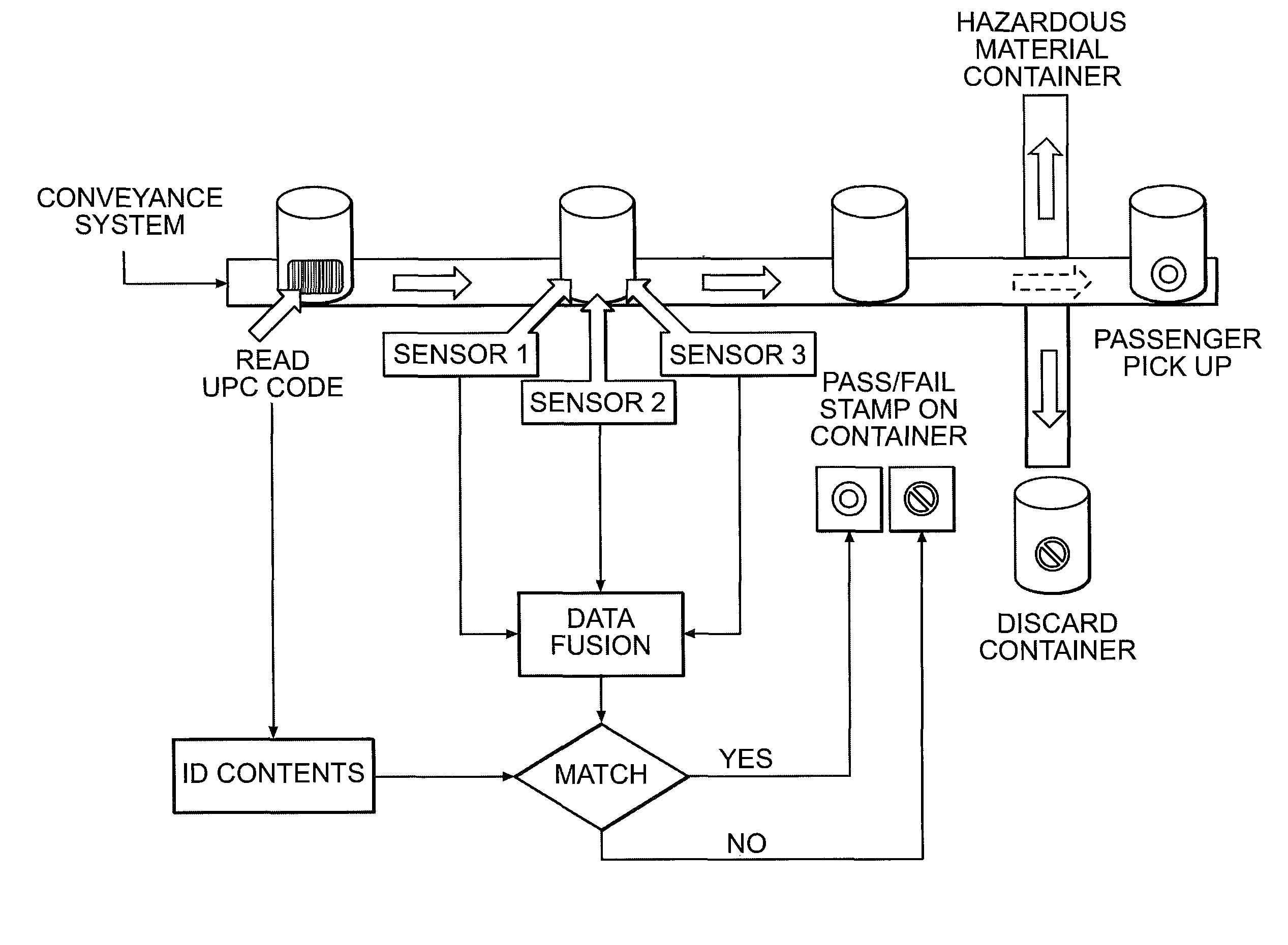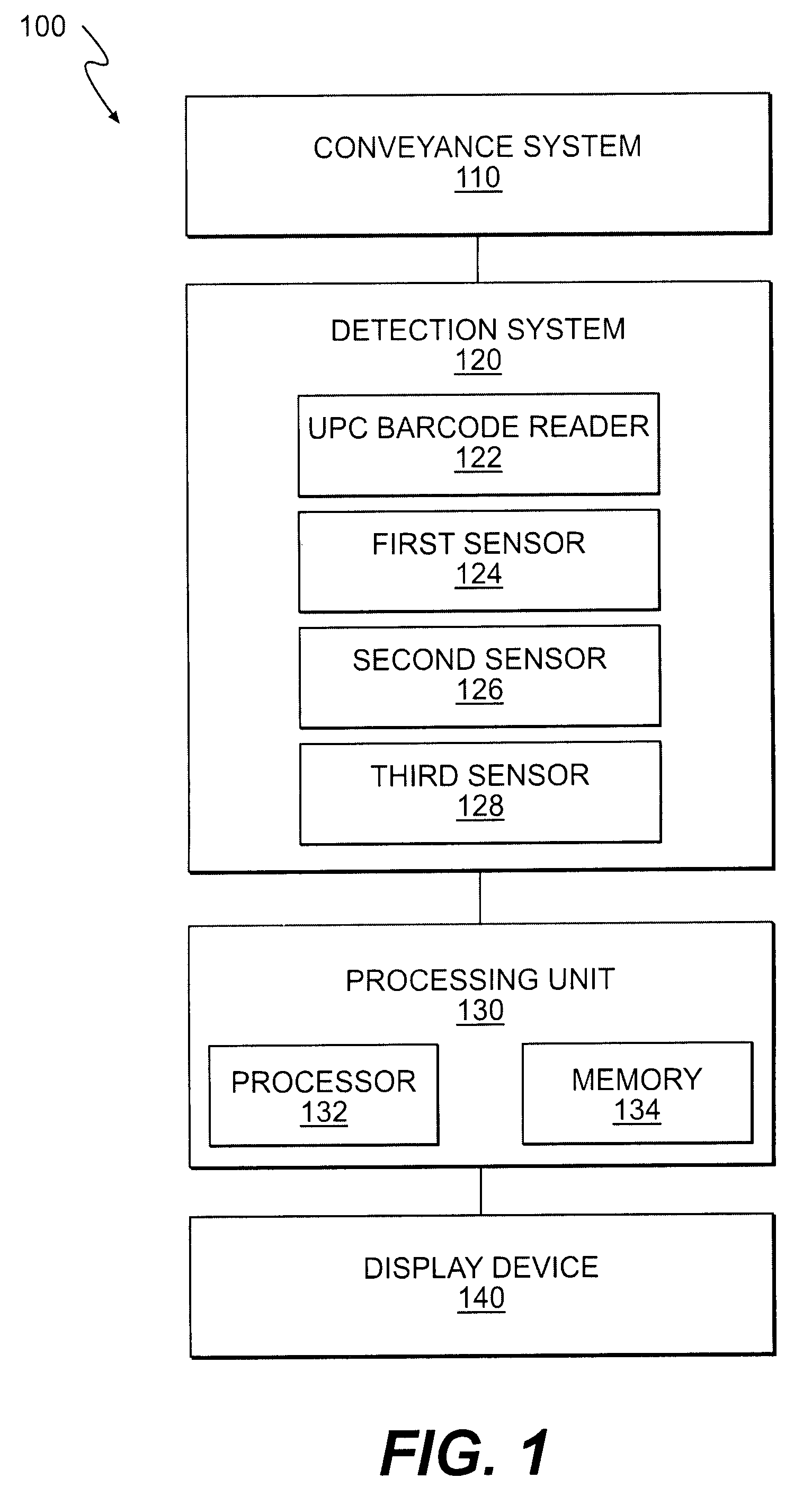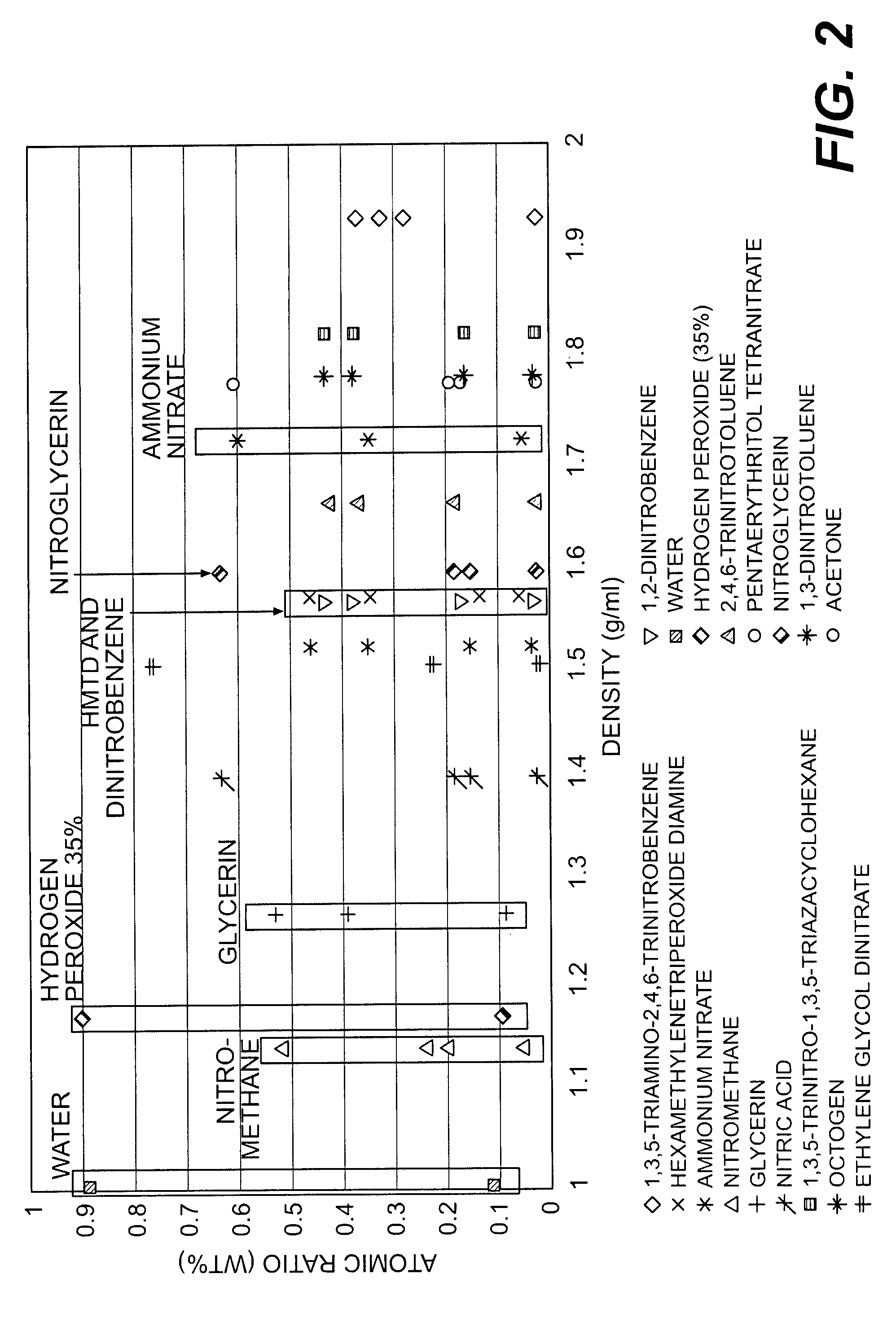Devices and methods for detecting hazardous materials
a technology for hazardous materials and detection devices, applied in chemical methods analysis, instruments, material analysis, etc., can solve the problems of difficult if not impossible detection based on particles on the surface of containers, and the general instability of liquid explosives to be readily smuggled aboard
- Summary
- Abstract
- Description
- Claims
- Application Information
AI Technical Summary
Benefits of technology
Problems solved by technology
Method used
Image
Examples
example 1
Discrimination of Hazardous Materials from Non-Hazardous Materials by Ultrosonic Technique
[0055]A number of hazardous and non-hazardous materials were screened with a HILDA Hazardous Liquid Detection Apparatus that uses an ultrasonic detection method (Spearhead Innovations, Inc., Arlington, Va.). The container is placed into HILDA's sample chamber and the ultrasonic transducers contacted with the container. In HILDA, the ultrasonic microphone is fixed and the ultrasonic transducer is on a spring loaded arm. The spring loaded arm is pulled such that the container will fit into the gap between the ultrasonic transducer and microphone. Then the arm is allowed to close onto the container contacting the ultrasonic transducer and microphone onto the container walls. As shown in FIGS. 6A and 6B, the ultrasonics are able to discriminate between the hazardous liquid materials (nitromethane, lighter fluid, gasoline, acetone) and the regular liquids people may carry (water, sprite, hand soap, ...
PUM
 Login to View More
Login to View More Abstract
Description
Claims
Application Information
 Login to View More
Login to View More - R&D
- Intellectual Property
- Life Sciences
- Materials
- Tech Scout
- Unparalleled Data Quality
- Higher Quality Content
- 60% Fewer Hallucinations
Browse by: Latest US Patents, China's latest patents, Technical Efficacy Thesaurus, Application Domain, Technology Topic, Popular Technical Reports.
© 2025 PatSnap. All rights reserved.Legal|Privacy policy|Modern Slavery Act Transparency Statement|Sitemap|About US| Contact US: help@patsnap.com



